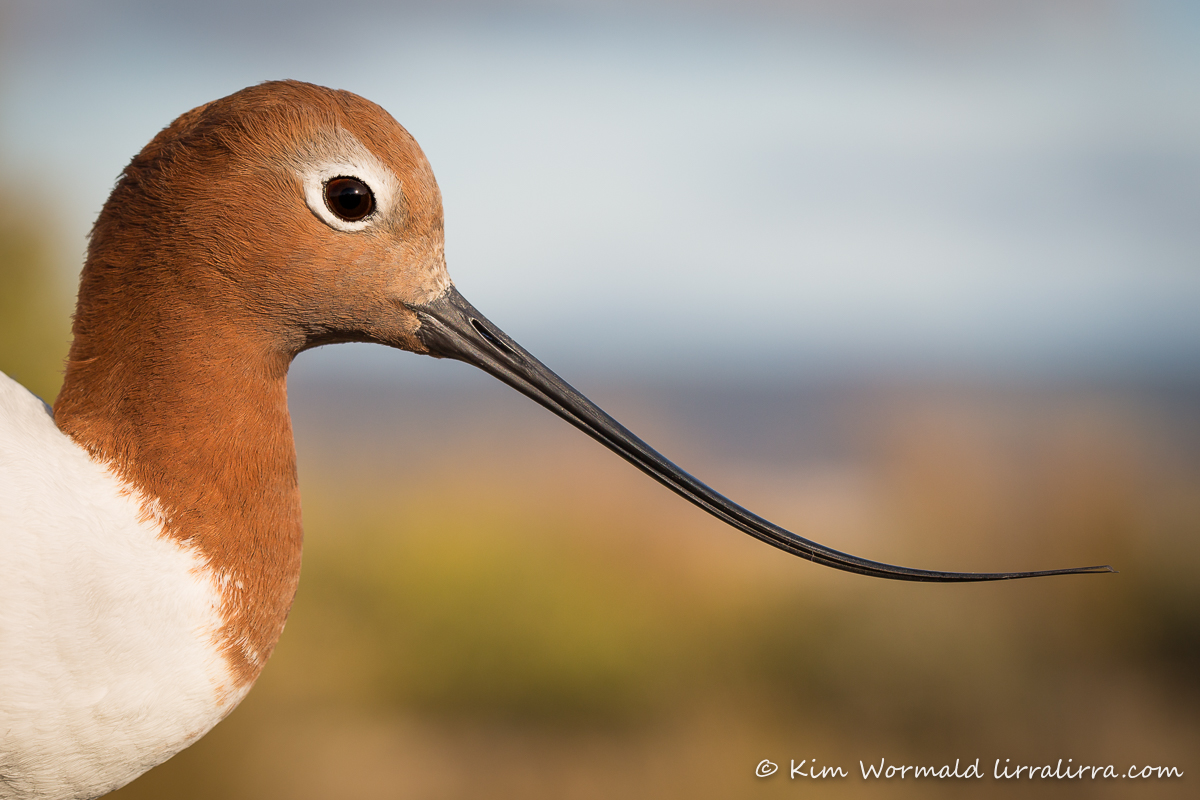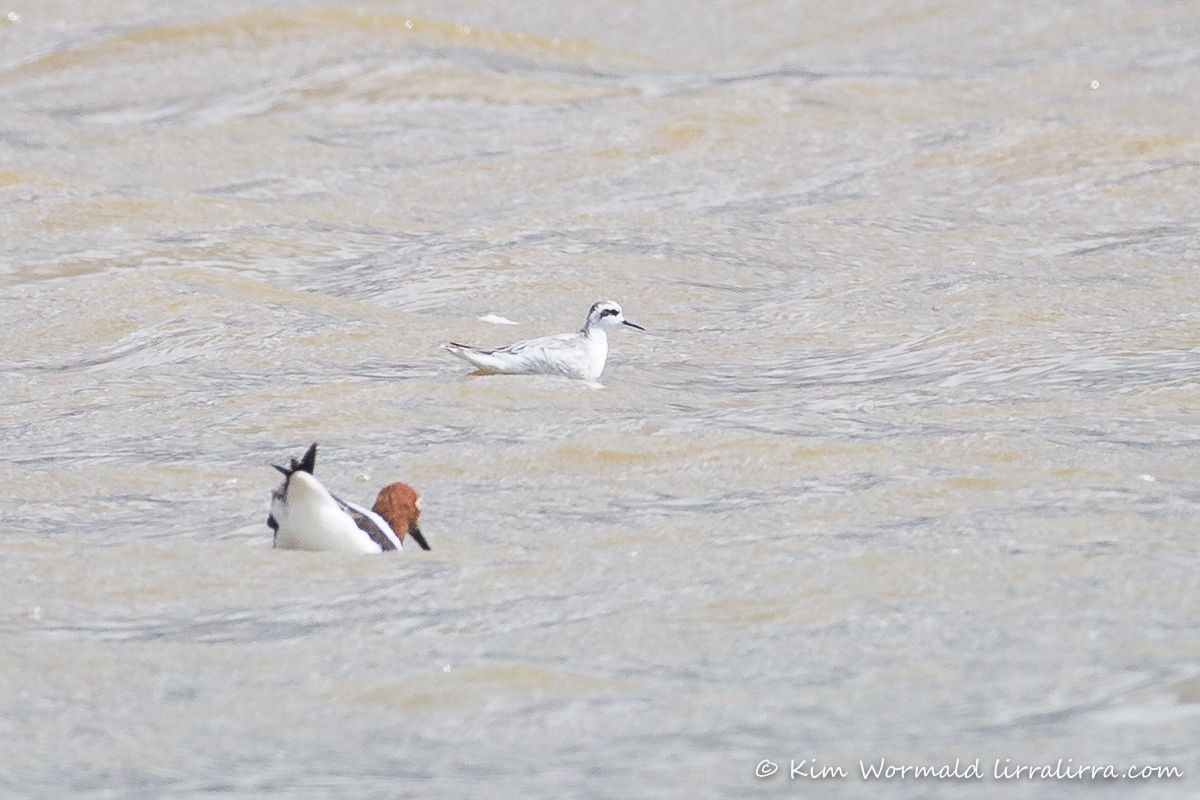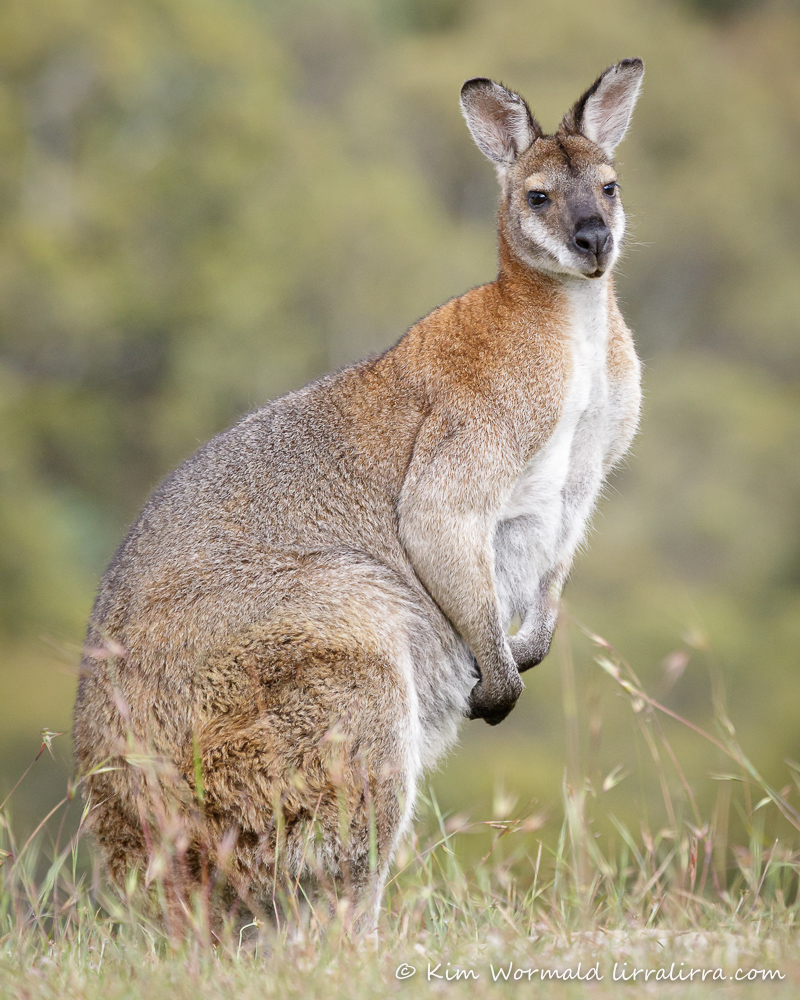One migratory wader, one wader that is endemic to Australia, one rare visitor and a stunningly beautiful macropod.

The first is a Red-necked Stint. This tiny wader is one of the world’s most remarkable birds. They measure about 14cm and weigh just 25g, which is about one third the weight of a hen’s large egg. And yet they migrate between Australia and Siberia. How on earth does such a tiny bird cope with such a huge migration? Red-neck Stints are one of the lesser known marvels of the world’s bird species.

The second is the Red-necked Avocet, arguably one of the world’s most elegant species. These birds are endemic to Australia; they measure 40-45cm and weigh about 310g. They are a nomadic species that travel around Australia in fairly small groups. Their insanely long bills are used by swishing them back and forth through shallow water as they forage for invertebrates.

The Red-necked Phalarope was first recorded in Australia in 1962 and the sprinkling of sightings since then are thought to be due to extreme weather events. This species is also called the Northern Phalarope as its regular migration patterns keep it within the northern hemisphere. I was super lucky to see this exquisite little bird at Werribee’s Western Treatment Plant.

And finally the macropod, the very attractive Red-necked Wallaby. These wallabies are solitary and secretive so I was especially thrilled to see one as I was driving from Jindabyne to the coast. This photograph is virtually full frame, all I have done is to trim a little from the top and bottom as I had to turn the camera to portrait to avoid capturing only part of the wallaby.
Apologies for the lack of camera settings but I’ve been unwell this week with parainfluenza which left me exhausted, achy and now with no sense of smell or taste. It’s a peculiar feeling to sniff a bottle of eucalyptus oil and feel as though it’s been replaced with water, until others smell the same bottle and confirm by their facial expressions as well as their words that it is definitely still oil.
Stay well everyone, happy birding, Kim
PS I’ve managed to do a little work on the calendar, thank you for so much feedback and my sincere apologies if I haven’t yet responded to your email.
~ Prints and gifts Lirralirra Shop
~ Facebook page Kim Wormald – lirralirra
~ Facebook group Ethical Bird Photography

Hoping that you recover quickly. We have these Wallabies at home and on one day this week had a family of five, the largest number I have ever seen together. (Sunshine Coast – QLD)
That sounds truly wonderful Carolyn! They are so stunning. I’d get absolutely no work done if they were at place.
That is a beautiful Photo of a Red-neck Avocet!
Thanks Jacob! They are truly exquisite birds.
I was half expecting a photo of a red-necked bogan – usually the odious enemy of wildlife! The photo of the Avocet is astonishing – with that slender beak, that curves down like a ski jump. And the superb stint! Imagine being clever enough to navigate your way from Oz to Siberia! I get lost trying to find my way out of huge shopping centres! And I love the quiet dignity of the wallaby – marvellous creatures. I read the other day, that kangaroos can hop 45 miles an hour – and the fastest human can only run 5 miles an hour. We really are clumsy apes, compared to those graceful wonders.
Sorry to hear you’re under the weather. Please don’t feel obliged to soldier on and send out Lirralirra – we all enjoy seeing your photos, of course, but you certainly deserve a few sniffly doona days to recover!
I’m glad you had a pleasant surprise then Deirdre! I had a kangaroo at my place today and a small mob on the other side of the creek. They are such beautiful animals to watch.
I’m hopeful that I’m on the mend, I definitely had some itty-bitty doona days. There seem to be more bugs than usual out there this year, I hope you stay well, Kim
I am so sorry that you have been unwell and hope that you have turned the tide.
I love the change of focus that this post has given me this morning. Never did I think that ‘red necked’ could be a turn of phrase I would welcome.
Awe and wonder at the tiny world wanderer too.
Thanks EC. That’s so true about ‘red necked’! It good that it can relate to some exquisite wildlife. I am totally in awe of the tiny wanderer.